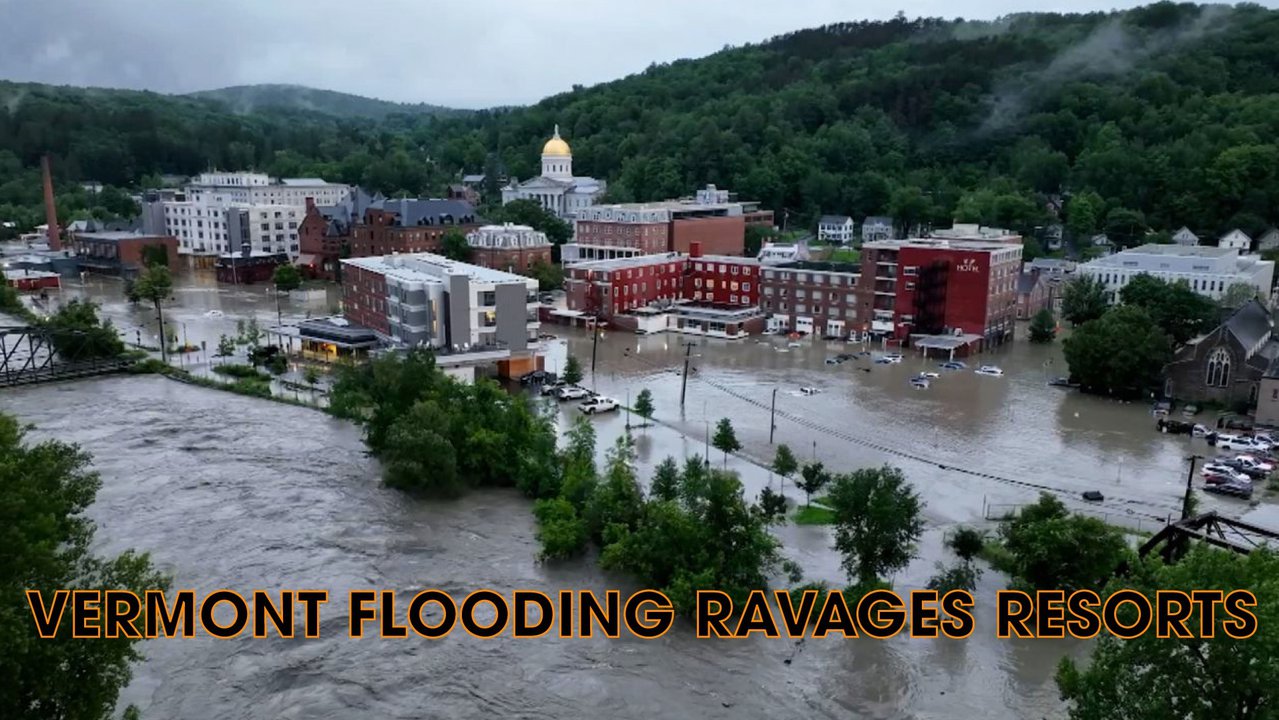Twelve years after the destructive Tropical Storm Irene, Vermont finds itself once again in the grips of a catastrophic flooding event. Governor Phil Scott has labeled the current situation as "historic and catastrophic" due to the relentless rainfall that has pounded the state over the past several days. Some areas have already experienced over seven inches of rain, leading to widespread flooding.
Governor Scott expressed concern over the prolonged nature of this event, unlike the relatively short duration of Tropical Storm Irene. Comparisons have been drawn to Irene, a storm that caused immense damage, destroying property, bridges, utility poles, and historic buildings. However, early reports indicate that the current flooding may surpass the severity of Irene.
Videos and images emerging from affected regions depict main streets transformed into raging rivers, with intersections submerged in swirling pools of rocks and mud. In Ludlow, home to Okemo Mountain Resort, reports suggest that the flooding is even more severe than during Irene. The ski resort's base areas have been heavily impacted, with mud and sand accumulation and potential damage to the beginner carpet and base lodge buildings. Locally-owned shops and cafes in towns across Vermont are underwater, and the forecast predicts additional moisture throughout the week.
In Londonderry, where Magic Mountain is located, floodwaters have coursed through the downtown area, rendering roads impassable and leaving behind mud-filled thoroughfares. The ski resort has witnessed deteriorating base village walkways and significant pools of rocks and mud near the slopes. Summer activities at most Vermont ski resorts, including Okemo and Killington, remain closed due to the severe weather conditions.
Ski area operators in Vermont and New York are growing increasingly concerned about the extent of the damage caused by the torrential rains and historic flooding. The National Weather Service has issued a flash flood warning for the mountain regions of both states, with Vermont being labeled as the "highest risk" area. The governors of both states have declared a state of emergency.
Geoff Hatheway, president of Magic Mountain, reported that the West River in Londonderry is overflowing, roads leading to the mountain and condos have been washed out, and homes and businesses in south Londonderry remain inaccessible. At the ski area, flooding has affected the base areas and the lodge, raising concerns about potential damages and silt accumulation.
Okemo Mountain Resort in Ludlow has also experienced heavy flooding, resulting in the closure of its adventure and bike parks. The resort's officials are focused on assessing and managing the impacts while closely monitoring conditions for potential reopening later in the week. Killington has faced additional challenges as Route 4 has been closed since July 6 due to a storm-induced landslide near the Skyship gondola.
The aftermath of this flooding event is predicted to be worse than that of Hurricane Irene, which caused significant damage amounting to billions of dollars in 2011. The current storm's extended duration and its projected path over Vermont are raising concerns of devastation across the entire spine of the Green Mountains.
Forecasters from NOAA's Weather Prediction Center have issued a rare "high risk" warning for excessive rainfall in most of Vermont and parts of northeastern New York. Multiple rounds of moderate to heavy rain are expected through Tuesday morning, with the potential for an additional seven inches of rainfall.
As Vermonters face this unfolding disaster, their resilience and determination will undoubtedly shine through, just as they demonstrated during the aftermath of Tropical Storm Irene.


Comments